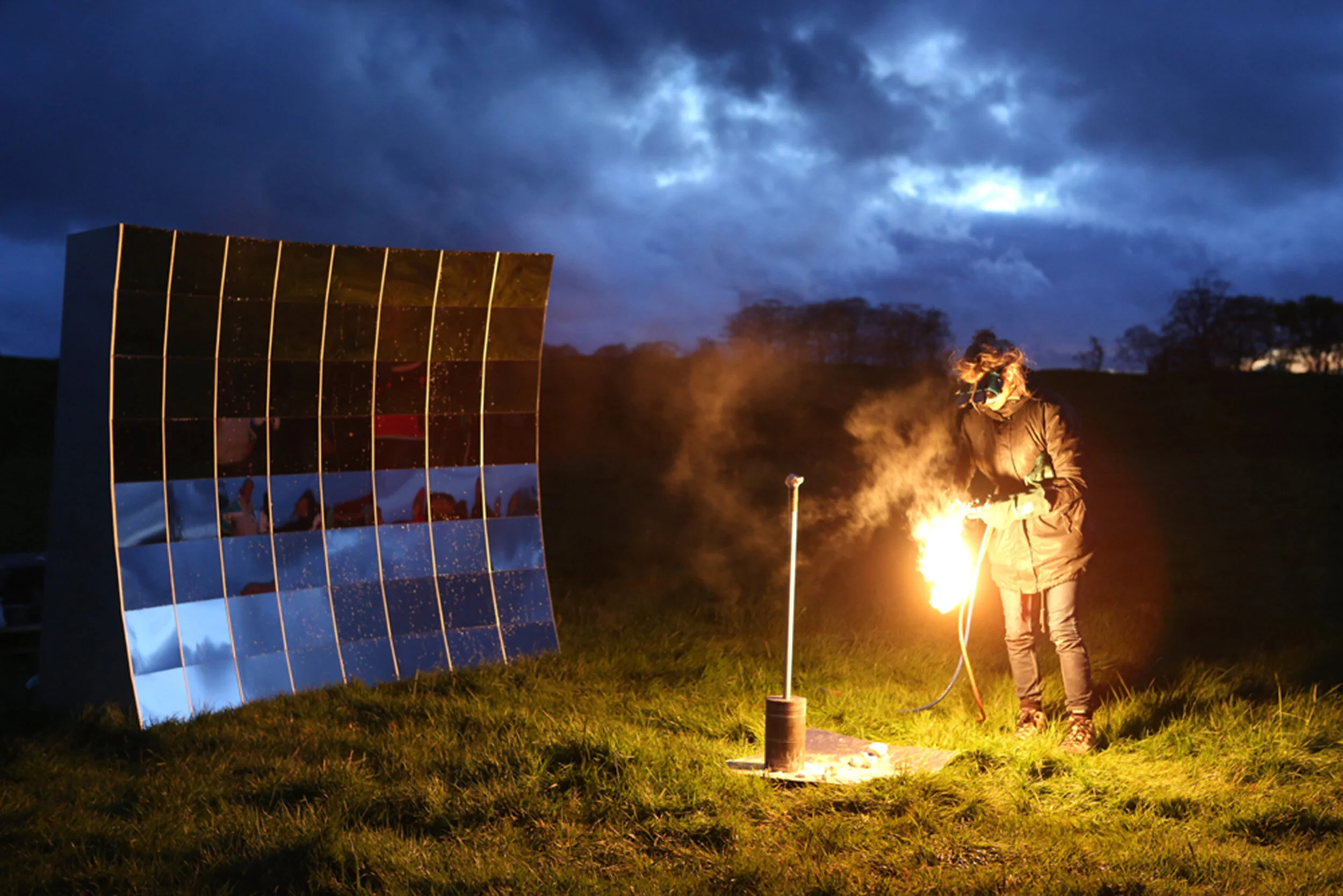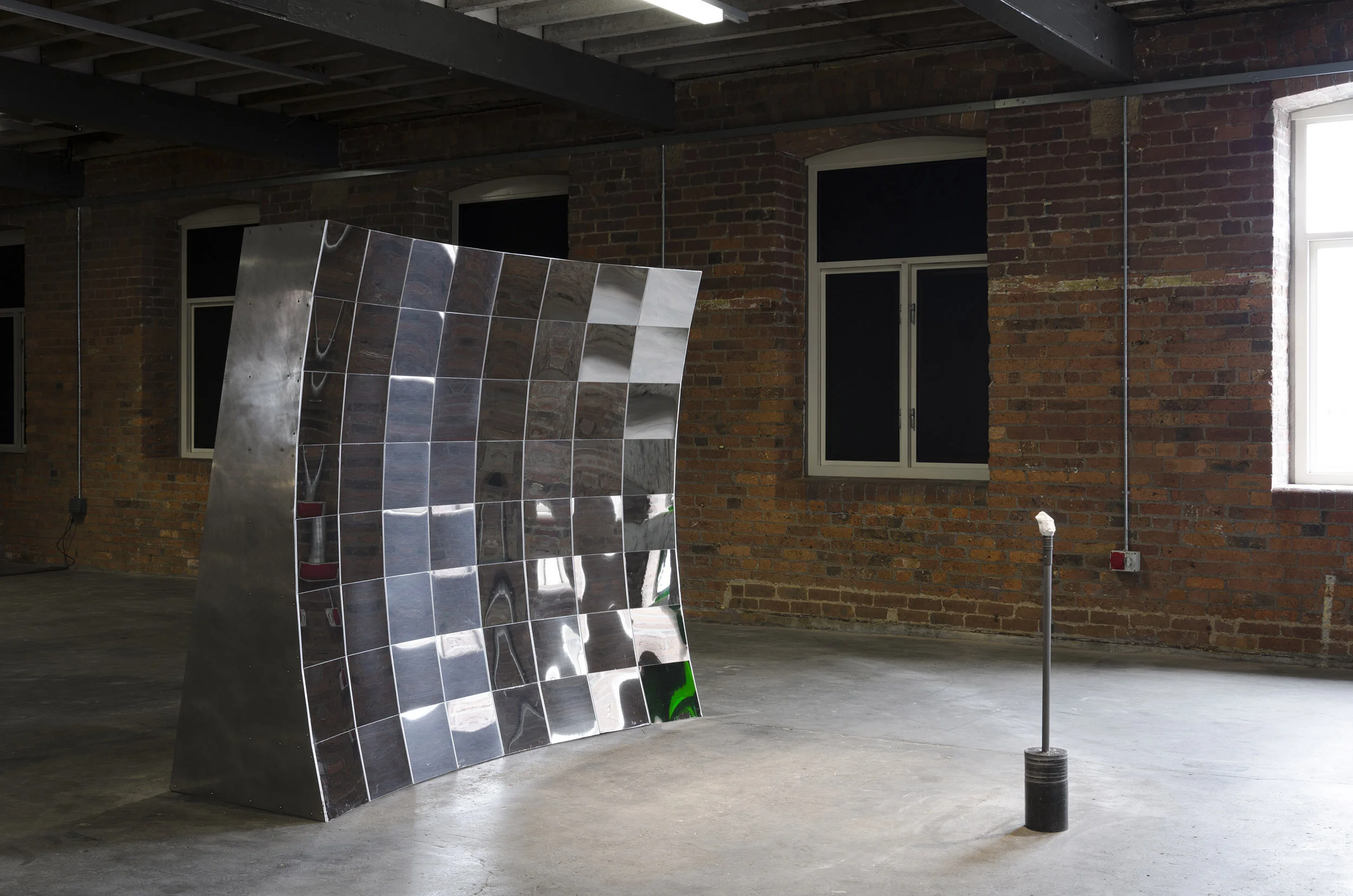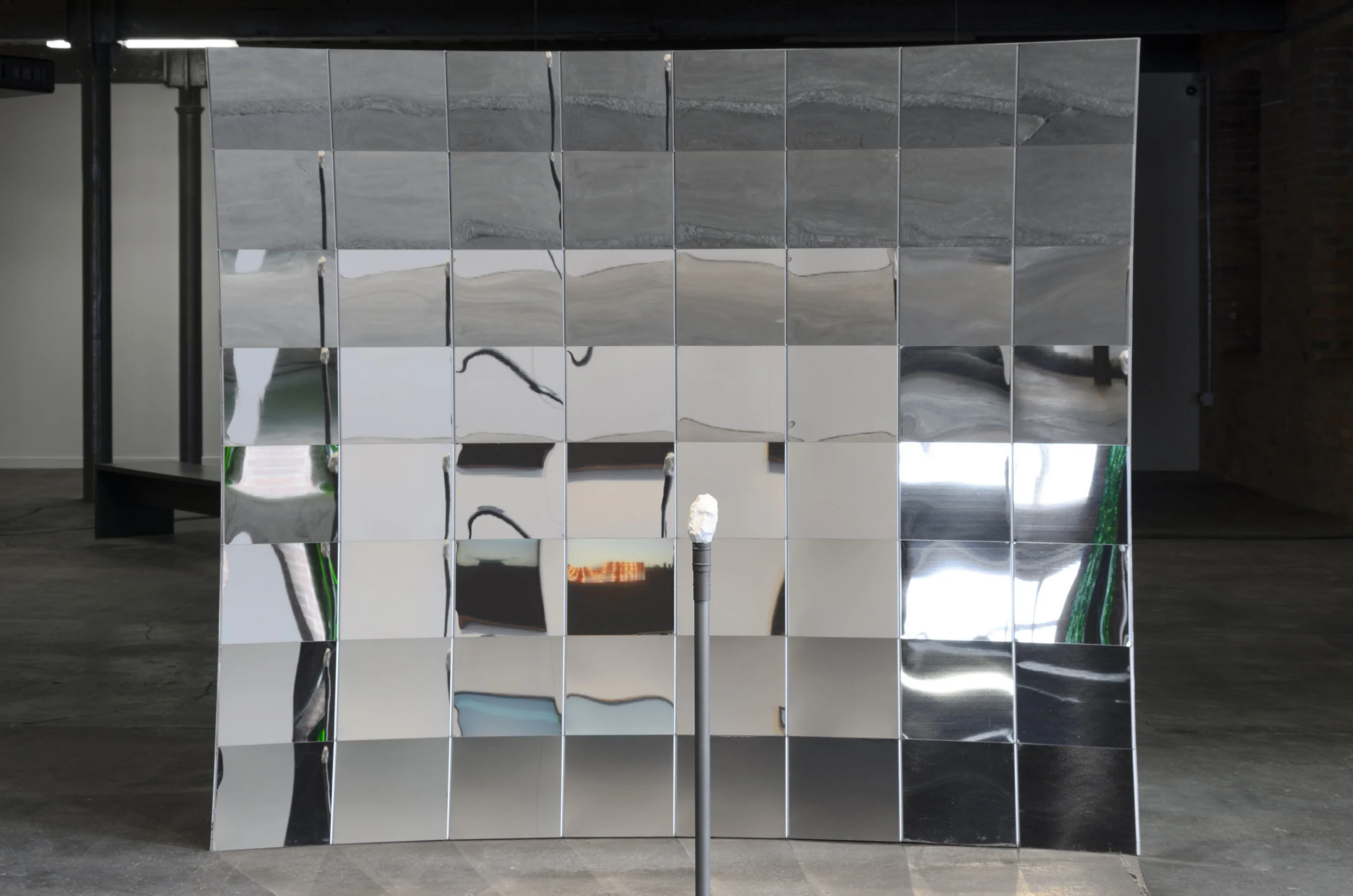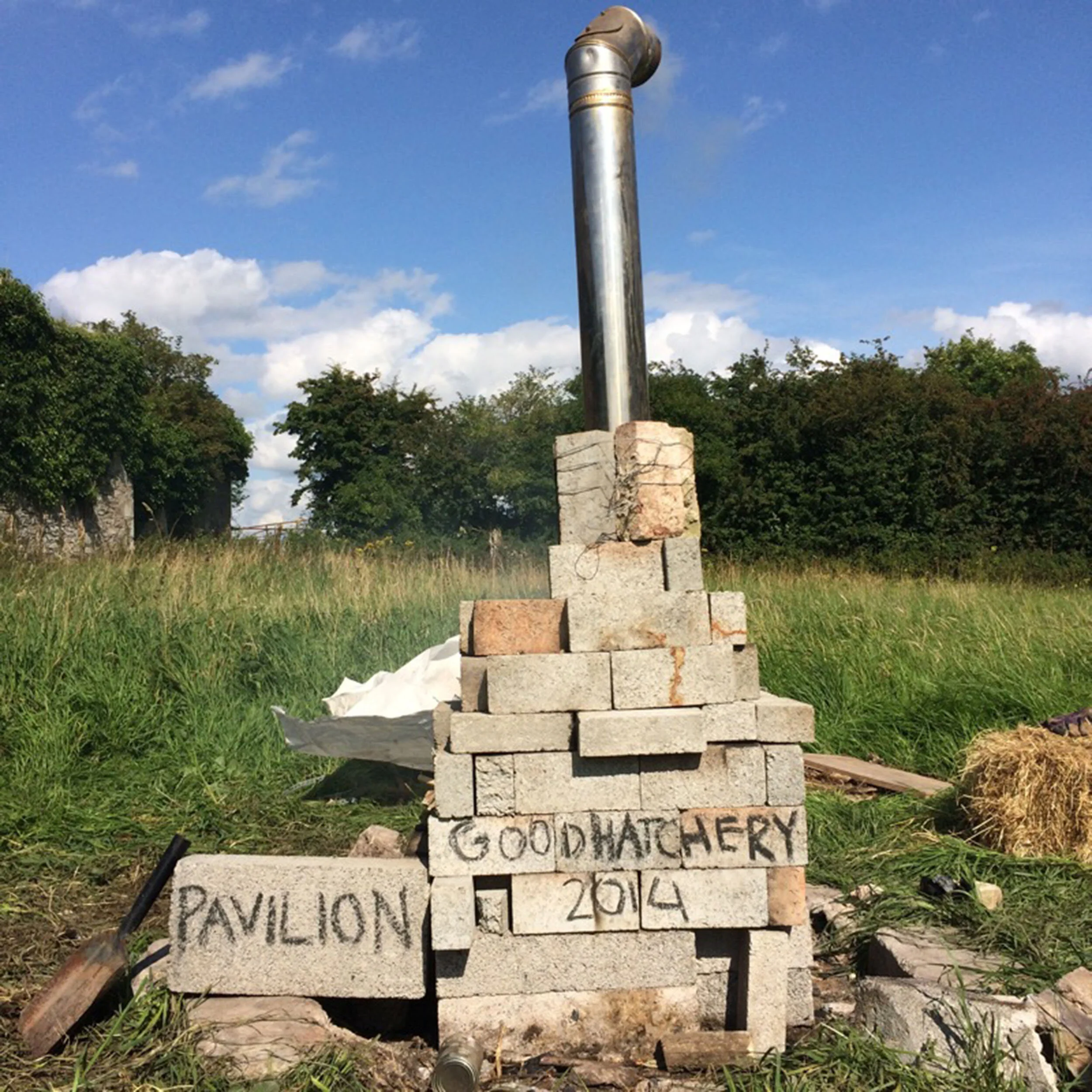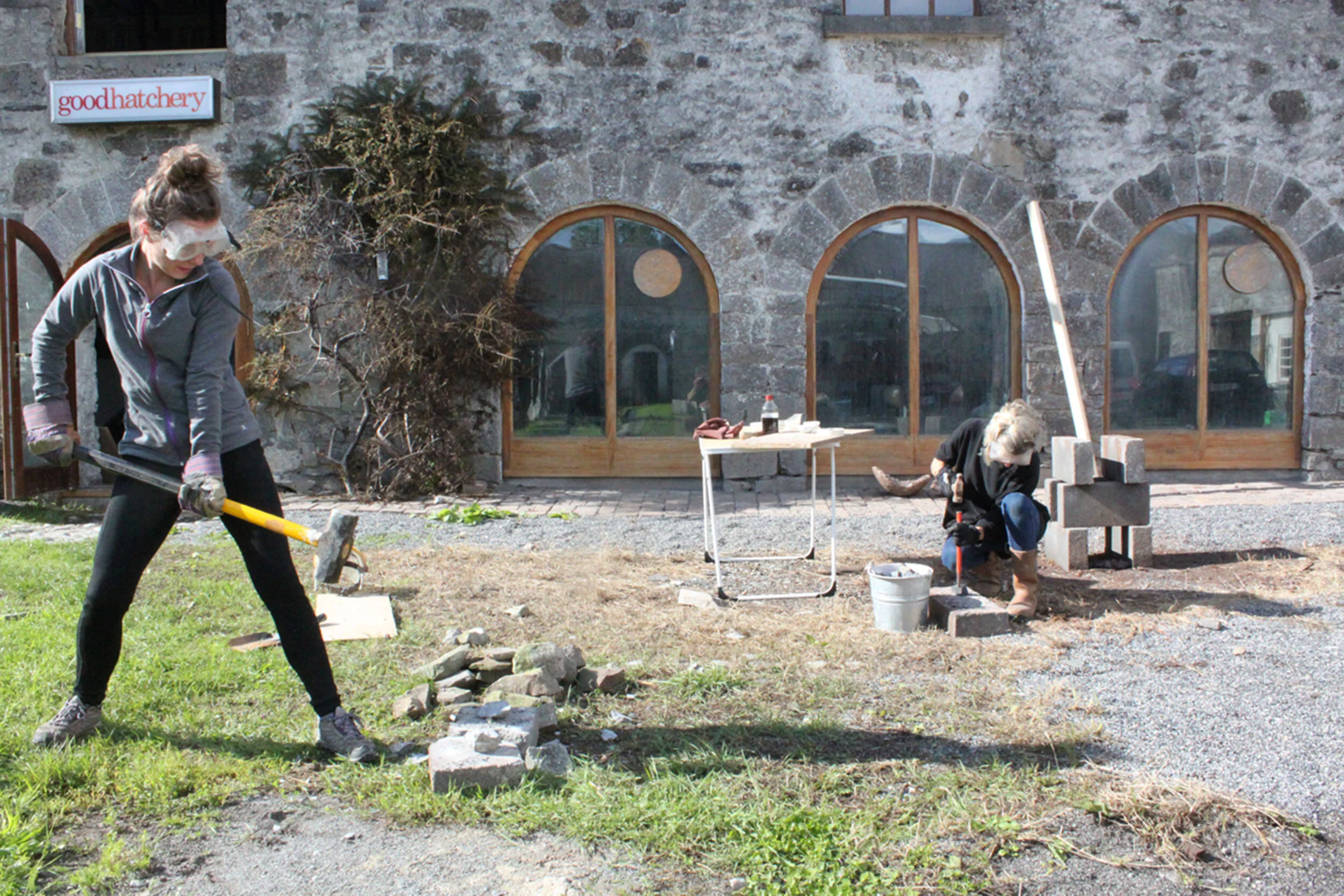Pilot Light
2015 / Commissioned by Pavilion UK
Light from stone
"That is the artist's job: take mineral rock from dark silent earth, transform it into shining light-reflecting form from sky."
--from "The Man in the High Castle" (1962)
Pilot Light is an expansive project that looks at the relationships between architecture and light in the landscape. Pilot Light took place in two locations, Byram landscape in Leeds and Dowth Henge in Meath followed by simultaneous exhibitions in Hepworth Wakefield Gallery and Droichead Arts Centre. Pilot Light was commissioned by Pavilion as part of their Follies of Youth project.
The performance of Pilot Light involves a limelight (quick-lime in an oxy-acetylene flame to give off a white light) burnt at the focal point of a mobile reflector.
The work draws on the history ordnance survey and the invention of limelight by Thomas Drummond for use in the 18thc triangulation of Ireland. The reflectors are in parabolic form so as to magnify the light from a focal point and project it out across the landscape. The use of the parabola is influenced by satellite technology and the revolution that this form has made to the way we understand landscape today.
Pilot Light was a triangulation in real time as the sister reflectors were stationed at different points on the globe simultaneously, one in Ireland and the other in the UK, drawing the disparate locations into a conversation about light and human obsession with light as illustrated through architecture from a megalithic henge with astronomical alignment to a coal fired electricity power station.
Pilot Light was co-funded by the Arts Council of Ireland Visual Arts Project Award


